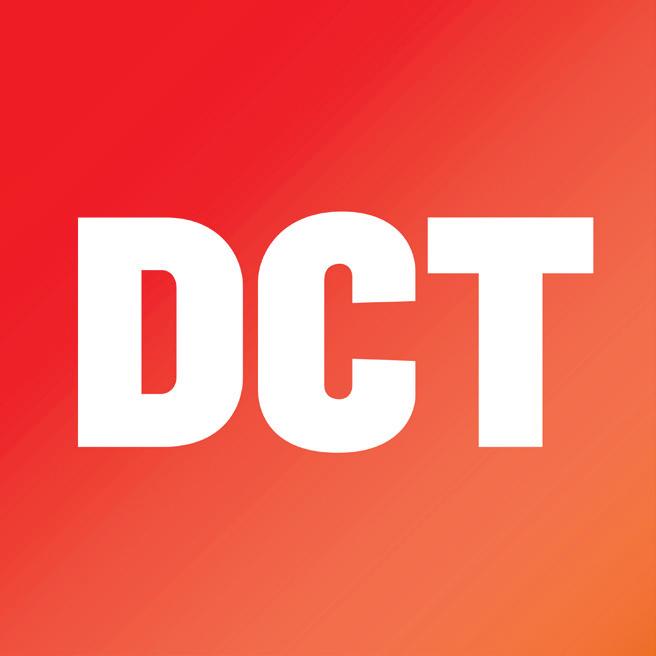
A Creative and Theatrical Study Guide for Teachers








SEPTEMBER 25 – OCTOBER 25, 2024










SEPTEMBER 25 – OCTOBER 25, 2024
DCT Executive Director Samantha Turner
Resource Guide Editor Jessica Colaw
Resource Guide Layout/Design Jamie Brizzolara
Play Grace for President
Book, Music & Lyrics by Joan Cushing
Adapted from the book G race for President by Kelly DiPucchio
Illustrations by LeUyen Pham, © 2012 Kelly DiPucchio, LeUyen Pham Available from Disney-Hyperion
By special arrangement with Gurman Agency LLC. Original Orchestrations by Deborah Wicks La Puma
DALLAS CHILDREN’S THEATER, one of the top five family theaters in the nation, serves over 150,000 young people and their families each year through its mainstage productions, educational programming, and outreach activities. Since its opening in 1984, this awardwinning theater has existed to create challenging, inspiring and entertaining theater, which communicates vital messages to our youth and promotes an early appreciation for literature and the performing arts. As the only major organization in Dallas focusing on theater for youth and families, DCT produces literary classics, original scripts, folk tales, myths, fantasies, and contemporary dramas that foster multicultural understanding, confront topical issues, and celebrate the human spirit.
DCT is committed to the integration of creative arts into the teaching strategies of academic core curriculum and educating through the arts. Techniques utilized by DCT artists/teachers are based upon the approach developed in Integration of Abilities and Making Sense with Five Senses by Paul Baker, Ph.D.
TEKS that your field trip to Dallas Children’s Theater satisfies are listed at the back of this Resource Guide.
2024-2025 EDUCATION SPONSORS
O ce of Arts & Culture
THE THEODORE AND BEULAH BEASLEY FOUNDATION
CRAWLEY FAMILY FOUNDATION
HOLLOWAY FAMILY FOUNDATION
As part of DCT’s mission to integrate the arts into classroom academics, the Behind the Curtain Resource Guide is intended to provide helpful information for the teacher and students to use before and after attending a performance. The activities presented in this guide are suggested to stimulate lively responses and multi-sensory explorations of concepts in order to use the theatrical event as a vehicle for cross-cultural and language arts learning.
Please use our suggestions as springboards to lead your students into meaningful, dynamic learning; extending the dramatic experience of the play.
Permission is granted for material included in this Resource Guide to be copied for use in the classroom.
Margot B. Perot
The Strake Foundation
Medical City
The Ryan Goldblatt Foundation
Prosperity Bank
Capital One
Frost Bank and Frost Insurance
Green Mountain Energy
DCT’s official renewable energy partner
EDUCATIONAL SUPPORT IS ALSO PROVIDED BY SENSORY-FRIENDLY SPONSORS
FICHTENBAUM CHARITABLE TRUST Bank of America, N.A., Trustee
First Unitarian Church of Dallas
Every DCT performance you see is the result of many people working together to create a play. You see the cast perform on stage, but there are people behind the scenes that you do not see who help before, during, and after every production.
Determines the overall look of the performance.
Guides the actors in stage movement and character interpretation.
Works with designers to plan the lights and sounds, scenery, costumes and makeup, and stage actions.
Plan the lights, sounds, scenery, costumes, make-up, and actions to help bring the director’s vision to life.
There are also designers who work to create the posters, advertisements, programs, and other media for the performance.
Build and operate the scenery, costumes, props, and light and sound during the performance.
Before the performance, they create a cue sheet to guide the crew in getting set pieces on and off the stage during the performances.
During the performance, the stage manager uses this cue sheet to direct people and things as they move on and off the stage.
Includes all of the performers who present the story on stage.
That’s right! There can be no performance without you—the audience. The role of the audience is unique because you experience the entertainment with the performers and backstage crew. You are a collaborator in the performance and it is important to learn your role so you can join all the people who work to create this Dallas Children’s Theater production.
Watching a play is different from watching television or a sporting event. When you watch T.V., you may leave the room or talk at any time. At a sporting event you might cheer and shout and discuss what you’re seeing. Your role as a member of the audience in a play means you must watch and listen carefully because:
• You need to concentrate on what the actors are saying.
• The actors are affected by your behavior because they share the room with you. Talking and moving around can make it difficult for them to concentrate on their roles.
• Extra noises and movement can distract other audience members.
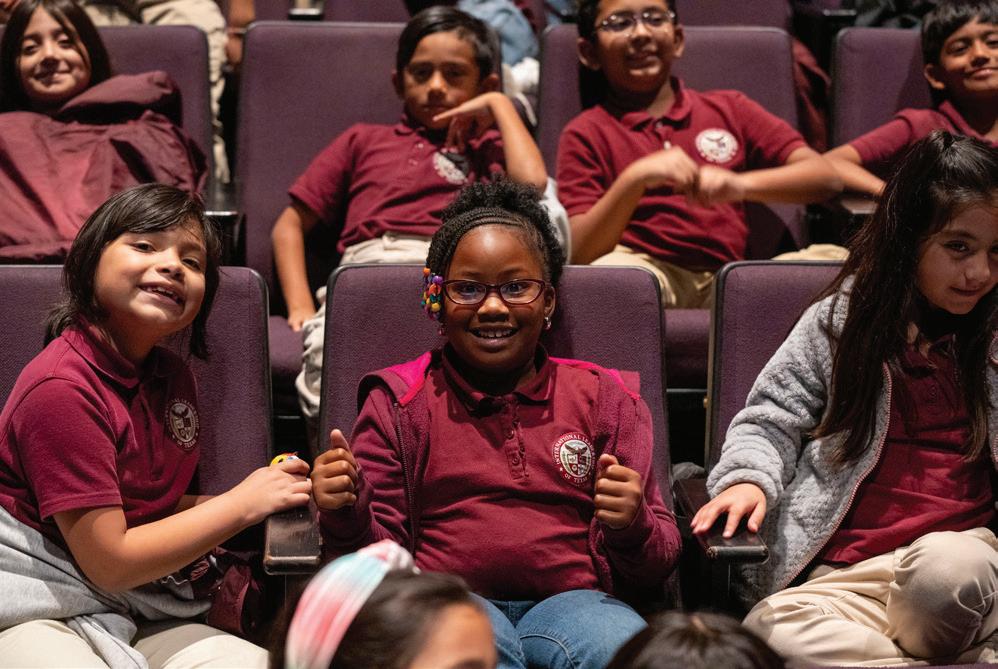
Check the box next to the statements that describe proper etiquette for an audience member.
q Try your best to remain in your seat once the performance has begun.
q Share your thoughts out loud with those sitting near you.
q Wave and shout out to the actors on stage.
q Sit on your knees or stand near your seat.
q Bring snacks and chewing gum to enjoy during the show.
q Reward the cast and crew with applause when you like a song or dance, and at the end of the show.
q Arrive on time so that you do not miss anything or disturb other audience members when you are being seated.
q Keep all hands, feet, and items out of the aisles during the performance.
Draw a picture of what the audience might look like from the stage. Consider your work from the viewpoint of the actors on stage. How might things look from where they stand?
Write a letter to an actor telling what you liked about their character.
Write how you think it might feel to be one of the actors. Are the actors aware of the audience? How might they feel about the reactions of the audience today? How would you feel before the play began? What about after the show ends?
1 2 3 4
Which job would you like to try? Acting, Directing, Lighting and Sounds, Stage Manager, Set designer, Costume designer, or another role? What skills might you need to complete your job?
ACTOR any theatrical performer whose job it is to portray a character
CAST group of actors in a play
CENTER STAGE the middle of the stage
CHARACTER any person portrayed by an actor onstage. Characters may often be people, animals, and sometimes things.
CHOREOGRAPHER the designer and teacher of the dances in a production
COSTUME DESIGNER the person who creates what the actors wear in the performance
DIRECTOR the person in charge of the actors’ movements on stage
DOWNSTAGE the area at the front of the stage; closest to the audience
HOUSE where the audience sits in the theater
LIGHTING DESIGNER the person who creates the lighting for a play to simulate the time of day and the location
ONSTAGE the part of the stage the audience can see
OFFSTAGE the part of the stage the audience cannot see
PLAYWRIGHT the person who writes the script to be performed. Playwrights may write an original story or adapt a story by another author for performance.
PLOT the story line
PROSCENIUM the opening framing the stage
PROJECT to speak loudly
PROP an object used by an actor in a scene
SET the background or scenery for a play
SETTING the time and place of the story
SOUND DESIGNER the person who provides special effects like thunder, a ringing phone, or crickets chirping
STAGE CREW the people who change the scenery during a performance
STAGE MANAGER the person who helps the director during the rehearsal and coordinates all crew during the performance
UPSTAGE the area at the back of the stage; farthest from the audience
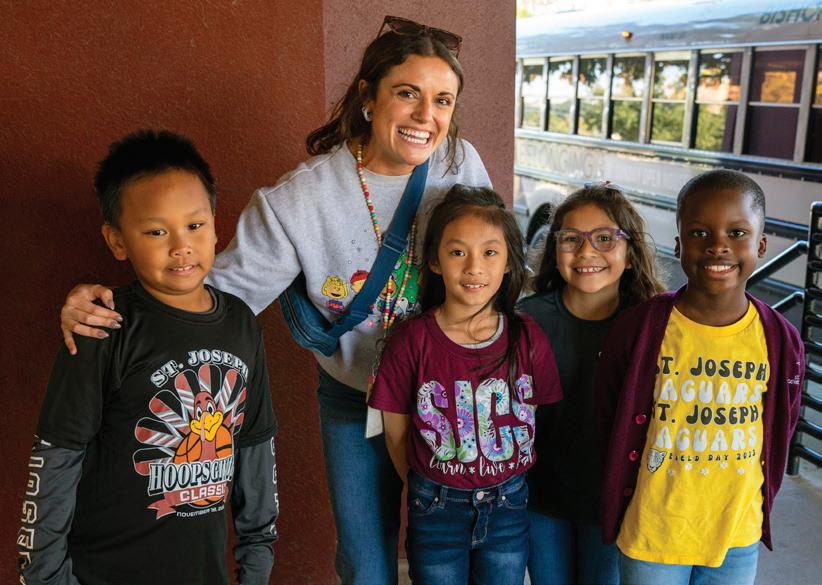
Attending a play is an experience unlike any other entertainment experience. Because a play is presented live, it provides a unique opportunity to experience a story as it happens. Dallas Children’s Theater brings stories to life though its performances. Many people are involved in the process. Playwrights adapt the stories you read in order to bring them off the page and onto the stage. Designers and technicians create lighting effects so that you can feel the mood of a scene. Carpenters build the scenery and make the setting of the story become a real place, while costumers and make-up designers can turn actors into the characters you meet in the stories. Directors help actors bring the story to life and make it happen before your very eyes. All of these things make seeing a play very different from television, videos, or computer games.
Hold a class discussion when you return from the performance. Ask students the following questions and allow them to write or draw pictures of their experience at DCT.
• What was the first thing you noticed when you entered the theater?
• What did you notice first on the stage?
• What about the set? Draw or tell about things you remember. Did the set change during the play? How was it moved or changed?
• Was there any space besides the stage where action took place?
• How did the lights set the mood of the play? How did they change throughout? What do you think the house lights are? How do they differ from the stage lights? Did you notice different areas of lighting?
• What did you think about the costumes? Do you think they fit the story? What things do you think the costume designers had to consider before creating the costumes?
• Was there music in the play? How did it add to the performance?
• What about the actors? Do you think they were able to bring the characters to life? Did you feel caught up in the story? What things do you think the actors had to work on in order to make you believe they were the characters?

An adaptation is a change made in something so that it can fit a new use. Grace for President is an adaptation of a book, which is meant to be read, into a play, which is meant to be performed and viewed. Joan Cushing took the work of Kelly DiPucchio and LeUyen Pham and adapted it so that it could be performed for an audience on stage.
Consider these questions for discussion before you attend the DCT production:
• What kinds of things did Joan Cushing have to consider in writing a script, music, and lyrics of the book?
• What kinds of things would Kelly DiPucchio and LeUyen Pham be concerned about with an adaptation of their book?
• Do you think the performance will be shorter or longer than the book?
• What will the characters look like? How will they match the illustrations? What differences can you expect?
• What about the story? What changes might you expect in adapting it for the stage? Why would these changes be necessary?
After the performance, consider these questions:
• Were there any characters or events that were in the book but not in the play? Why do you think these choices were made?
• Did the changes make the story stronger or was it weaker because of them?
• What do you think the set and costume designers need to consider when bringing the story to the stage?
• What things helped to tell the story on stage?
Use the compare and contrast template on the next page to illustrate the similarities and differences between the book and DCT’s performance of Grace for President.
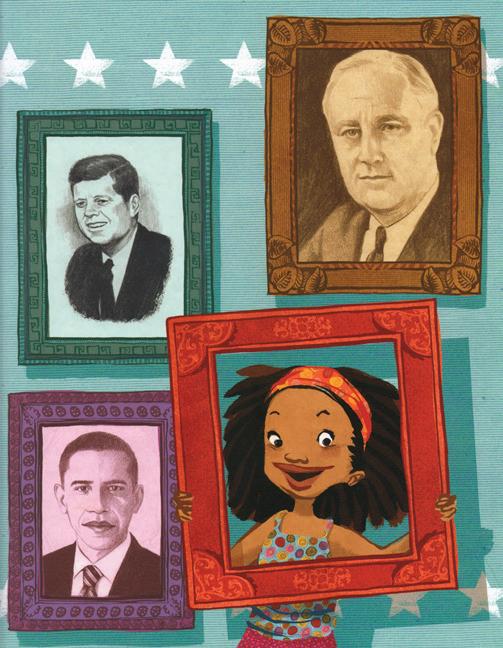
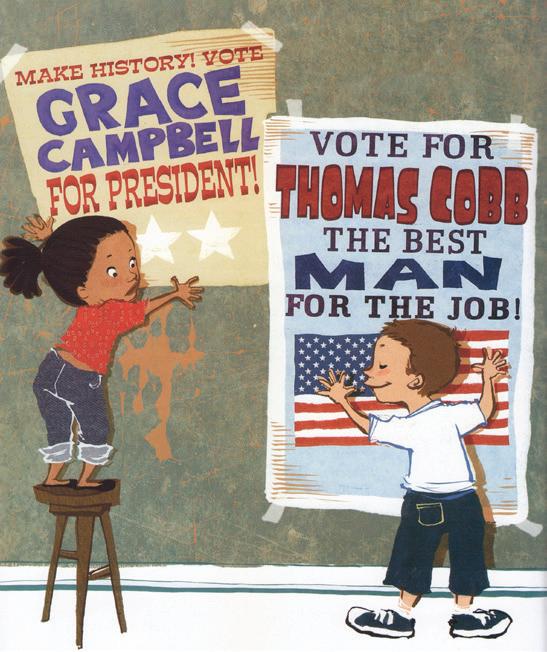
for President Compare and Contrast

KELLY D i PUCCHIO is the #1 New York Times bestselling author of over 30 stories for children. Her books have been translated into multiple languages and have sold more than one million copies worldwide.
Kelly’s titles include Grace For President, Gaston, and The Sandwich Swap – a picture book she co-authored for Queen Rania of Jordan.
Her books have appeared on Good Morning America, The Oprah Show and The View and have received numerous starred reviews and awards.
Kelly travels the country speaking to kids about the importance of kindness, overcoming adversity, and personal empowerment.
She lives in southeastern Michigan with her growing family which includes three crazy dogs and three perfect grandchildren.
Excerpted from: kellydipucchio.com/about
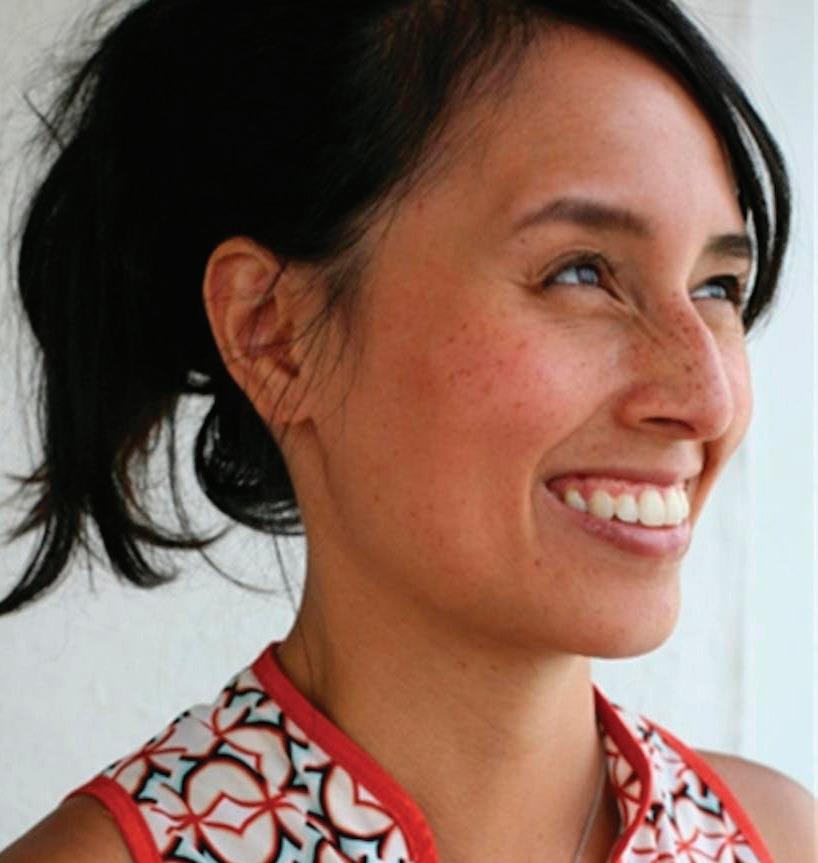
L e UYEN PHAM has illustrated more than one hundred books for children, including the Caldecott Honor book Bear Came Along by Richard T. Morris and the bestselling Princess in Black series by Shannon and Dean Hale. She is the co-creator, along with Shannon Hale, of the bestselling graphic memoirs Real Friends, Best Friends, and Friends Forever. Her own books include The Bear Who Wasn't There and Big Sister, Little Sister. A graduate of the ArtCenter College of Design in Pasadena, LeUyen lives in Los Angeles with her husband and two sons.
Excerpted from: us.macmillan.com/author/leuyenpham
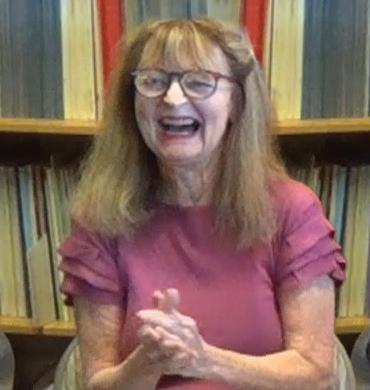
JOAN CUSHING was a former elementary school teacher and cabaret performer, best known for her political satirical revue Mrs. Foggybottom & Friends, which opened in 1986 at New Playwrights Theatre and moved to the Omni-Shoreham Hotel in Washington, D.C. where it ran for 10 hit years, and four years on the road, including performances at Don’t Tell Mama and The Triad in NYC.
She adapted 16 popular children's books as musicals, receiving over 400 productions and 5 national tours: Miss Nelson Is Missing!, winner of the 2003 Nat’l Children’s Theatre Festival; Junie B. Jones & a Little Monkey Business!; Miss Nelson Has a Field Day!; Petite Rouge: A Cajun Red Riding Hood (2007 NY Musical Theatre Festival); Heidi (with playwright Martha King De Silva); and George & Martha: Tons of Fun, all commissioned by Imagination Stage; Lawrence, commissioned by Gabrielino High School; Brave Irene, commissioned by Adventure Theatre; and Diary of a Worm, a Spider & a Fly, commissioned by Oregon Children's Theatre. Other theatres that have produced her work include Seattle Children’s Theatre, Childsplay Theatre, Omaha Theatre Co., Children's Theatre of Charlotte, Dallas Children’s Theater, Orlando Shakespeare Festival, North Shore Music Theatre, South Coast Repertory, First Stage Milwaukee, Walnut Street Theatre, Stage One Louisville, Nashville Children's Theatre, Emerald City Theatre, Stages Theatre, Orlando Rep, Manhattan Children's Theatre, and California Theatre Center. According to TYA Magazine, she was “the most produced playwright in children's theatre” and Miss Nelson Is Missing! is “the most produced play.”
Ms. Cushing lived in the Nation's Capital where all the crazy politics happens. Her husband Paul Buchbinder died of pancreatic cancer several years ago but left her with three beautiful sons and four splendid grandsons. She passed away on May 21, 2024.
Excerpted from: joancushing.com/bio.html and en.wikipedia.org/wiki/Joan_Cushing
By Dave Nuttycombe,
videographer and photographer - This is a screen shot taken by and provided by Dave Nuttycombe of Middle C Music of Washington DC, who also shot the video it was taken from., CC BY-SA 4.0, en.wikipedia.org/wiki/Joan_Cushing
Use the following questions to lead a discussion with students after attending DCT’s performance of Grace for President
• What are Grace and her classmates studying in Mrs. Barrington’s class?
• What does Grace notice about the presidents of the United States of America?
• What are Grace’s presidential qualifications?
• Who is Grace’s opponent?
• What kind of president do you think Grace would be? What about Thomas?
• Describe the presidential competition (for example, are there certain groups who really want Grace or Thomas to win? How are Grace and Thomas similar or different in their campaigns?).
• How will this presidential race be decided?
• Who does Sam vote for? Why?
• What does Grace want to be when she grows up?
Just because the curtain closes on Grace for President doesn’t mean Grace’s political adventure is over! Did you know that Kelly DiPucchio and LeUyen Pham created a sequel to Grace for President ? Grace Goes to Washington details Grace’s adventures on a field trip to the capital city. Read the book to your class and then discuss: how is the story different from the original? How is it similar? What happened at the beginning, middle, and end of the story?
“My name is Grace Campbell, and when I grow up, I’m going to be President of the United States.”
Now it’s your students’ turn to adapt the sequel in to a play (just like Joan Cushing adapted the original). Working as a whole group, create a script (include dialogue/stage directions, etc.). Ask students for suggestions about what to keep from the story and what to edit…will the script be an exact replica of the original or just loosely based on the book? “Workshop” the script: choose actors to read and act out the script (you may need to make adjustments to the script as you work). Don’t forget to discuss the script-writing process: what challenges did the class experience? What came easy during the process? How does the script compare to the book?
For older students, instead of working as a whole class, make this an individual or group project. When all the scripts are complete, have students take turns sharing their scripts. Discuss how the scripts were similar and different. Don’t forget to celebrate everyone’s unique perspectives!
Adapted from: childdrama.com/lpplay.html

Although Grace for President details how the Electoral College works in a fun song on stage, this math activity will help reinforce the idea in the classroom.
Have the students vote for either Grace or Thomas. (If the class is close to unanimous in their choice, assign some students to vote for the opposing candidate.) Chart the results and explain that this is the popular vote of the class.
Divide the class into five groups representing different states. Group 1 should have one student, Group 2 should have three students, Group 3 should be medium-sized, and Groups 4 and 5 should be very large (the last three groups should have uneven numbers, if possible). Have each "state" vote for a candidate.
The two small groups have two representatives each in your classroom Electoral College, the two large groups have six representatives each, and the medium group has four representatives. Add up Electoral College votes, and chart or graph the results. Create a chart or graph comparing popular votes with electoral votes and discuss the results.
Excerpted from: edutopia.org/blog/interactive-learning-about-elections-paul-gigliotti
In Grace for President, Grace is discouraged about running against an opponent with so many accomplishments. Her teacher, Mrs. Barrington, reminds her about the good she has done in their school community:
“And what about the rules on the playground? Who got us to change them? So if someone is standing all by themselves the other students are asked to invite that student to join them…You made something happen, Grace. You didn’t like what you saw and you changed it…You fix things and those things sometimes fix people and make the rest of us better.”
Grace has been a good citizen, something we can all strive to be (whether we, too, want to be president someday or not). As a class, brainstorm ways students can be good citizens in their communities and families, and even in class. Write these ideas on the board and discuss how to effectively achieve them. Have students select an idea they want to put in to action and come up with a plan. Report back when those ideas are reality and celebrate the good citizenship prevalent in your classroom!
Created by: Jessica Colaw
Grace is shocked and dismayed to learn that there has never been a female U.S. president. Although that still remains true, many women have held important roles in the United States government throughout history (from Jeanette Rankin, the first woman elected to Congress, to Kamala Harris, the current Vice President). As a class or individually, research and learn more about one (or more) of these great women. Check out these resources to get started: kids-clerk.house.gov/grade-school/lesson.html?intID=19
readbrightly.com/100-years-of-women-in-congress-12-political-pioneers-to-introduce-to-kids/ nypl.org/blog/2020/11/23/women-are-leaders-books
After the research is complete, find creative ways to share the information. Create a poster detailing the findings, write a letter to the chosen female leader thanking her for her service (utilize the attached template, if desired), or make a video about her accomplishments (just to name a few ideas).
Inspired by: playhousesquare.org/assets/doc/GFP-Resource-Guide-FINAL-ba2a0d2202.pdf
Greeting
Date
I recently learned about your accomplishments in Government, such as:
Thank you for:
You have inspired me to:
Closing
Signature
Just like in our national elections, the presidential candidates in Grace for President debate each other. Debates are important in elections as they help illuminate different sides of an issue. But, you do not have to be running for president to engage in a debate. Check out the following video (and, if you feel it is appropriate, share it with your class) to learn why two middle school debaters think learning to debate is important: pbs.org/video/bbs-1687466858/
As a class, talk about what it means to debate. Come up with rules that would make a debate respectful and fun. Now, it’s time to have a classroom debate! Pick an amusing subject (favorite sweet treat, for example) and ask for two volunteers to debate each other in front of the class. Continue with more debates on other issues (i.e. favorite subject in school, best movie, etc.) if time and volunteers allow. After the debates, discuss what the class witnessed. What did the debaters do well? What areas of growth did you see? Don’t forget to thank everyone who volunteered: debates can be intimidating and challenging, but they are a fundamental part of our democratic process! The following resources may be helpful as you prepare your students for a good debate: thinkgrowgiggle.com/2019/12/how-to-hold-debates-in-your-classroom.html niu.edu/citl/resources/guides/instructional-guide/classroom-debates.shtml
Organized by: Jessica Colaw
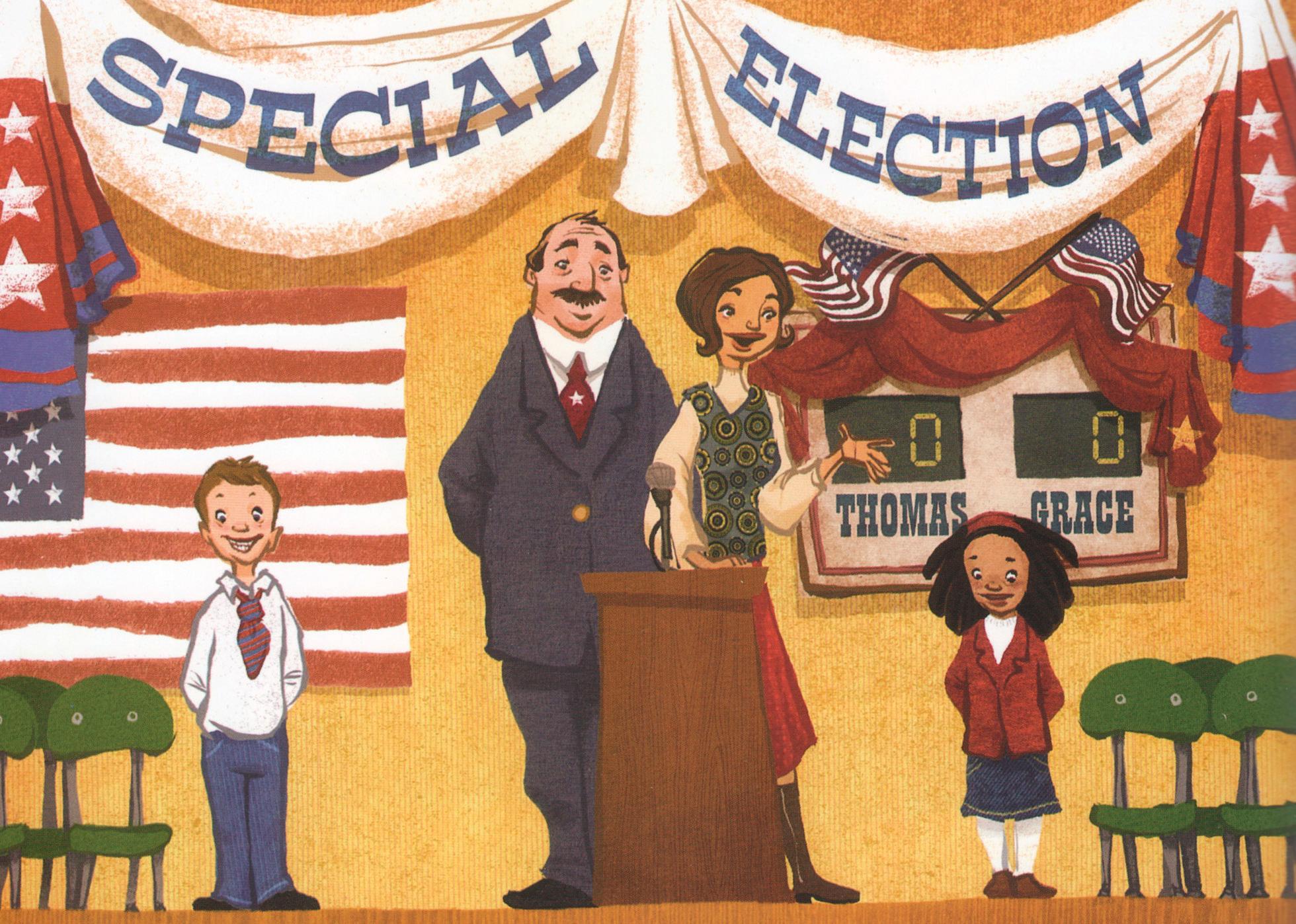
Pretend like you are running for class president just like Grace! Create your own campaign poster that represents who you are and what you stand for.
You will need:
• Paper
• Crayons, markers, pencils, pens, etc.
• Picture of you (optional)
campaign [kam-peyn]
noun
1. a series of activities that are done to achieve a goal.
First, brainstorm what you want your poster to say. This could be your name, things you like, things you dislike, how you want to make a difference in your school, or even a snazzy quote to show off your personality. What are things you can say to encourage people to “vote” for you? Next, get to designing. Be creative and make a poster that represents all things you. This is a fun way to practice because you might decide you want to campaign one day. Whether you become class president or president of the United States, you are capable of so many wonderful and amazing things!
Excerpted from: richlandlibrary.com/blog/2020-09-30/diy-storytime-grace-president
More books by Kelly DiPucchio:
Becoming Charley
Gaston
Everyone Loves Bacon
Mouse & Giraffe
Poe Won’t Go
The Sandwich Swap
And many more…
More books illustrated by LeUyen Pham:
Princess in Black series
Freckleface Strawberry series
Piggies in a Polka
The Boy Who Loved Math
Isabella For Real
Lunar New Year Love Story
And many more…
110.3 English Language Arts and Reading, Grade 1
b.11 Composition: listening, speaking, reading, writing, and thinking using multiple texts - writing process. The student uses the writing process recursively to compose multiple texts that are legible and uses appropriate conventions.
110.4 English Language Arts and Reading, Grade 2
b.11 Composition: listening, speaking, reading, writing, and thinking using multiple texts - writing process. The student uses the writing process recursively to compose multiple texts that are legible and uses appropriate conventions.
110.5 English Language Arts and Reading, Grade 3
b.11 Composition: listening, speaking, reading, writing, and thinking using multiple texts - writing process. The student uses the writing process recursively to compose multiple texts that are legible and uses appropriate conventions.
110.6 English Language Arts and Reading, Grade 4
b.11 Composition: listening, speaking, reading, writing, and thinking using multiple texts - writing process. The student uses the writing process recursively to compose multiple texts that are legible and uses appropriate conventions.
111.3 Mathematics, Grade 1
b.8 Data analysis. The student applies mathematical process standards to organize data to make it useful for interpreting information and solving problems.
111.4 Mathematics, Grade 2
b.10 Data analysis. The student applies mathematical process standards to organize data to make it useful for interpreting information and solving problems.
11.5 Mathematics, Grade 3
b.8 Data analysis. The student applies mathematical process standards to solve problems by collecting, organizing, displaying, and interpreting data.
111.6 Mathematics, Grade 4
b.9 Data analysis. The student applies mathematical process standards to solve problems by collecting, organizing, displaying, and interpreting data.
117.105 Art, Grade 1
b.2 Creative expression. The student communicates ideas through original artworks using a variety of media with appropriate skills. The student expresses thoughts and ideas creatively while challenging the imagination, fostering reflective thinking, and developing disciplined effort and progressive problem-solving skills.
117.108 Art, Grade 2
b.2 Creative expression. The student communicates ideas through original artworks using a variety of media with appropriate skills. The student expresses thoughts and ideas creatively while challenging the imagination, fostering reflective thinking, and developing disciplined effort and progressive problem-solving skills.
117.111 Art, Grade 3
b.2 Creative expression. The student communicates ideas through original artworks using a variety of media with appropriate skills. The student expresses thoughts and ideas creatively while challenging the imagination, fostering reflective thinking, and developing disciplined effort and progressive problem-solving skills.
117.114 Art, Grade 4
b.2 Creative expression. The student communicates ideas through original artworks using a variety of media with appropriate skills. The student expresses thoughts and ideas creatively while challenging the imagination, fostering reflective thinking, and developing disciplined effort and progressive problem-solving skills.
117.107 Theatre, Grade 1
b.5 Critical evaluation and response. The student responds to and evaluates theatre and theatrical performances.
117.110 Theatre, Grade 2
b.5 Critical evaluation and response. The student responds to and evaluates theatre and theatrical performances.
117.113 Theatre, Grade 3
b.5 Critical evaluation and response. The student responds to and evaluates theatre and theatrical performances.
117.116 Theatre, Grade 4
b.5 Critical evaluation and response. The student responds to and evaluates theatre and theatrical performances.
